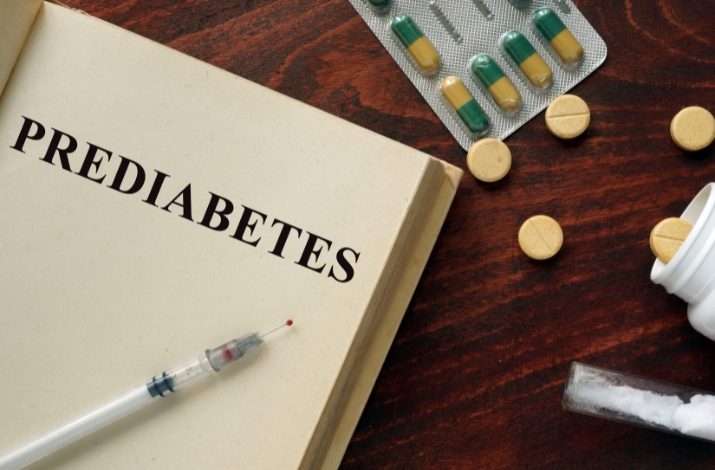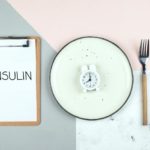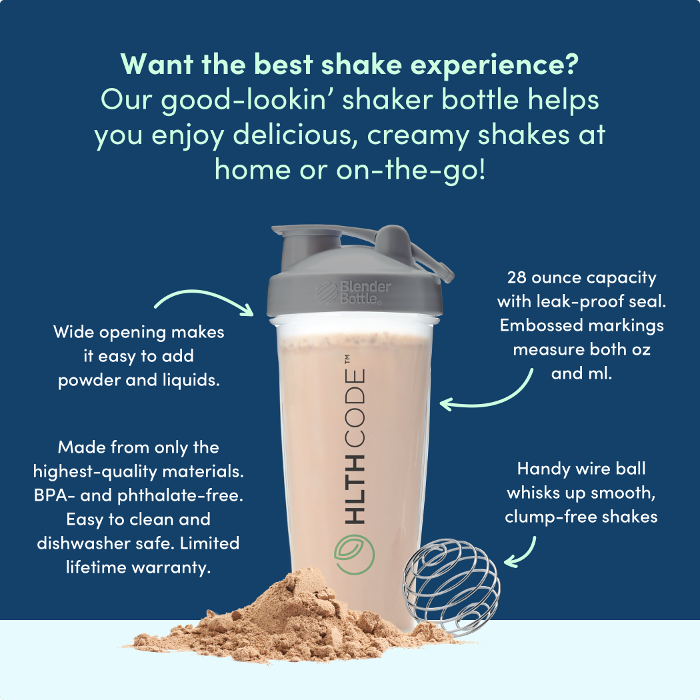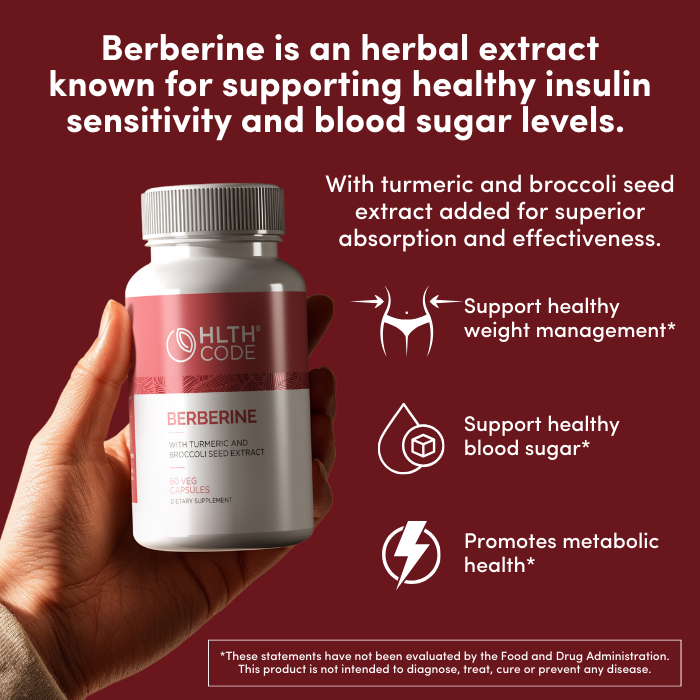Prediabetes: Steps to Manage and Reverse It

Prediabetes is a condition characterized by blood glucose levels that are higher than normal but not yet high enough to be classified as type 2 diabetes. This intermediate state is crucial because it presents a window of opportunity to prevent or delay the onset of diabetes through lifestyle and dietary changes. According to the Centers for Disease Control and Prevention (CDC), approximately 88 million American adults have prediabetes, yet more than 84% of them are unaware of their condition1.
What can you do if you have – or are worried that you have – prediabetes? Read on for the top 10 ways!
- Adopt a Healthy Diet
A balanced diet is fundamental in managing prediabetes. Emphasizing whole, unprocessed foods can help regulate blood sugar levels. Key dietary recommendations include:
Incorporate Fiber: While there are no essential carbohydrates, high-fiber foods from fruits, and vegetables can help stabilize blood sugar by slowing digestion and glucose absorption2.
Choose Low Glycemic Index Foods: Foods with a low glycemic index, such as nuts, seeds, and non-starchy vegetables, cause a slower rise in blood glucose levels3.
Limit Sugary Foods and Refined Carbohydrates: These can cause rapid spikes in blood sugar levels. Reducing intake of sweets, sodas, and white bread is essential4.
- Regular Physical Activity
Engaging in regular physical activity helps improve insulin sensitivity and assists with weight management, which are both critical in controlling prediabetes. Recommendations include:
Aerobic Exercise: Activities like walking, jogging, cycling, or swimming for at least 150 minutes per week provide benefit5.
Strength Training: Incorporating resistance exercises two to three times a week can help build muscle mass and reduce insulin resistance6.
- Achieve and Maintain a Healthy Weight
Weight loss has a profound effect on blood glucose control. Even a modest weight loss of 5-10% of body weight can significantly improve blood sugar levels and reduce the risk of progressing to diabetes7.
- Monitor Blood Sugar Levels
Regular monitoring of blood sugar levels can help track progress and make necessary adjustments to diet and lifestyle. Utilizing tools such as continuous glucose monitors or periodic blood tests can provide valuable feedback8.
- Increase Water Intake
Staying well-hydrated helps maintain normal blood sugar levels. Water is the best choice, while reducing (and ideally eliminating) sugary drinks9.
- Limit Alcohol and Quit Smoking
Both alcohol and smoking can negatively affect blood glucose levels and overall health. To reduce the risk of diabetes, cessation of smoking and alcohol are recommended10.
- Consider Supplementation with Berberine
Berberine is a natural compound found in several plants that has shown promise in managing prediabetes and improving insulin sensitivity. Clinical studies have demonstrated its effectiveness in lowering blood sugar levels and enhancing metabolic health11.
Mechanisms and Benefits of Berberine:
Improves Insulin Sensitivity: Berberine activates AMP-activated protein kinase (AMPK), an enzyme that plays a role in cellular energy balance and can improve insulin sensitivity12.
Reduces Glucose Production: Berberine has been shown to decrease glucose production in the liver, similar to the effect of metformin, a common diabetes medication13.
Enhances Gut Health: It may also improve gut microbiota composition, which can positively affect metabolic health14.
- Reduce Stress
Chronic stress can elevate blood sugar levels and contribute to insulin resistance. Techniques such as mindfulness, meditation, yoga, and adequate sleep can help manage stress effectively15.
- Get Adequate Sleep
Poor sleep quality or insufficient sleep can negatively impact blood sugar levels and insulin sensitivity. Aim for 7-9 hours of quality sleep per night to support metabolic health16.
- Regular Medical Check-Ups
Regular check-ups with a healthcare provider can help monitor your progress, adjust treatment plans, and address any complications early on. This includes periodic A1C tests to assess average blood sugar levels over the past three months17.
Conclusion
Prediabetes is a critical juncture where lifestyle changes can significantly impact health outcomes. By adopting a healthy diet, engaging in regular physical activity, maintaining a healthy weight, monitoring blood sugar levels, staying hydrated, limiting alcohol and tobacco use, considering berberine supplementation, managing stress, ensuring adequate sleep, and having regular medical check-ups, individuals can effectively manage and potentially reverse prediabetes.
References
- Centers for Disease Control and Prevention. (2020). National Diabetes Statistics Report, 2020. Available at: https://www.cdc.gov/diabetes/pdfs/data/statistics/national-diabetes-statistics-report.pdf
- Slavin, J. L. (2013). Dietary fiber and body weight. Nutrition, 29(4), 411-418.
- Jenkins, D. J. A., Kendall, C. W. C., & Augustin, L. S. A. (2002). Glycemic index: overview of implications in health and disease. American Journal of Clinical Nutrition, 76(1), 266S-273S.
- Ludwig, D. S. (2002). The glycemic index: physiological mechanisms relating to obesity, diabetes, and cardiovascular disease. JAMA, 287(18), 2414-2423.
- Colberg, S. R., Sigal, R. J., Fernhall, B., et al. (2010). Exercise and type 2 diabetes: the American College of Sports Medicine and the American Diabetes Association: joint position statement. Diabetes Care, 33(12), e147-e167.
- Sigal, R. J., Kenny, G. P., Wasserman, D. H., et al. (2006). Physical activity/exercise and type 2 diabetes. Diabetes Care, 29(6), 1433-1438.
- Hamman, R. F., Wing, R. R., Edelstein, S. L., et al. (2006). Effect of weight loss with lifestyle intervention on risk of diabetes. Diabetes Care, 29(9), 2102-2107.
- American Diabetes Association. (2020). Standards of medical care in diabetes—2020. Diabetes Care, 43(Suppl. 1), S1-S212.
- Popkin, B. M., D’Anci, K. E., & Rosenberg, I. H. (2010). Water, hydration, and health. Nutrition Reviews, 68(8), 439-458.
- Willi, C., Bodenmann, P., Ghali, W. A., et al. (2007). Active smoking and the risk of type 2 diabetes: a systematic review and meta-analysis. JAMA, 298(22), 2654-2664.
- Yin, J., Xing, H., & Ye, J. (2008). Efficacy of berberine in patients with type 2 diabetes mellitus. Metabolism, 57(5), 712-717.
- Turner, N., Li, J. Y., Gosby, A., et al. (2008). Berberine and its derivatives: a novel class of AMPK activators with beneficial effects on type 2 diabetes and insulin resistance. Diabetes, 57(5), 1414-1418.
- Zhang, Y., Li, X., Zou, D., et al. (2008). Treatment of type 2 diabetes and dyslipidemia with the natural plant alkaloid berberine. Journal of Clinical Endocrinology & Metabolism, 93(7), 2559-2565.
- Habtemariam, S. (2020). Berberine pharmacology and the gut microbiota: a hidden therapeutic link. Pharmacological Research, 155, 104722.
- O’Connor, D. B., Thayer, J. F., & Vedhara, K. (2021). Stress and health: A review of psychobiological processes. Annual Review of Psychology, 72, 663-688.
- Reutrakul, S., & Van Cauter, E. (2018). Sleep influences on obesity, insulin resistance, and risk of type 2 diabetes. Metabolism, 84, 56-66.
- American Diabetes Association. (2020). Standards of medical care in diabetes—2020. Diabetes Care, 43(Suppl. 1), S1-S212.
This article is for informational and educational purposes only. It is not, nor is it intended to be substitute for professional medical advice, diagnosis, or treatment and should never be relied upon for specific medical advice.



















